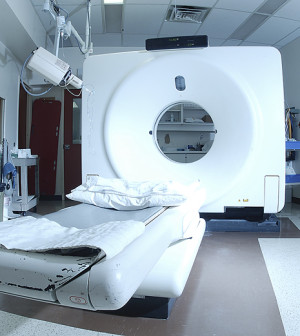- Skip Storing This Everyday Product in the Fridge Door
- Green Tea + B3 Pairing May Boost Brain Health
- Navigating Your Midlife Crisis: Embracing New Possibilities
- City Raccoons Showing Signs of Domestication
- Mapping the Exposome: Science Broadens Focus to Environmental Disease Triggers
- One Week Less on Social Media Linked to Better Mental Health
- Your Brain Changes in Stages as You Age, Study Finds
- Some Suicide Victims Show No Typical Warning Signs, Study Finds
- ByHeart Formula Faces Lawsuits After Babies Sickened With Botulism
- Switch to Vegan Diet Could Cut Your Greenhouse Gas Emissions in Half
Slower Brain Connections May Be at Root of Dyslexia


Glitches in the connections between certain brain areas may be at the root of the common learning disorder dyslexia, a new study suggests.
It’s estimated that up to 15 percent of the U.S. population has dyslexia, which impairs people’s ability to read. While it has long been considered a brain-based disorder, scientists have not understood exactly what the issue is.
The new findings, reported in the Dec. 6 issue of Science, suggest the blame lies in faulty connections between the brain’s storage space for speech sounds and the brain regions that process language.
The results were surprising, said lead researcher Bart Boets, because his team expected to find a different problem. For more than 40 years, he said, many scientists have thought that dyslexia involves defects in the brain’s “phonetic representations” — which refers to how the basic sounds of your native language are categorized in the brain.
But using sensitive brain imaging techniques, Boets and colleagues found that was not the case in 23 dyslexic adults they studied. The phonetic representations in their brains were just as “intact” as those of 22 adults with normal reading skills.
Instead, it seemed that in people with dyslexia, language-processing areas of the brain had difficulty accessing those phonetic representations.
“A relevant metaphor might be the comparison with a computer network,” said Boets, of the Leuven Autism Research Consortium in Belgium. “We show that the information — the data — on the server itself is intact, but the connection to access this information is too slow or degraded.”
And what does that all mean? It’s too soon to tell, said Boets. First of all, he said, this study used one form of brain imaging to study a small group of adult university students.
But dyslexia normally begins in childhood. And it’s possible, Boets said, that the “intact” phonetic representations in these adults took longer to develop and might not have been apparent when they were children.
Even if children with dyslexia have the same underlying brain issue seen in this study, it’s not clear how that could be used in managing kids’ reading difficulties.
According to Boets, the “most established” way to help children with dyslexia is through instruction on the smallest sounds of speech (called phonemes) and how each corresponds to letters.
And the good news, Boets said, is that those types of tactics should help strengthen the brain connections that seemed to be impaired in this study.
Still, “it is not inconceivable,” he added, that these results could be used to develop more-refined therapies that try to zero in on specific brain connections. He pointed to non-invasive magnetic stimulation of certain brain areas as an example — though that is only speculation for now.
The findings are based on functional MRI (fMRI) brain scans, which gauge brain activity by charting changes in blood flow and oxygen. The research team used two sophisticated analytical techniques to try to tease out what was happening in study participants’ brains as they listened to different sounds of speech and then performed a simple test.
Studies like this one, based on fMRI, have proved useful in the “real world,” said Ben Shifrin, vice president of the International Dyslexia Association in Baltimore.
“These fMRI studies have helped us improve interventions for children,” said Shifrin, who is also head of the Jemicy School in Baltimore, which specializes in educating kids with language-based learning disorders.
One example, he said, is that it’s now clear that the “intensity” of the instruction — more hours per day — is key in children’s progress.
Shifrin said it’s not clear how these latest findings could be translated into practical use. But, he added, “we know that these types of studies can end up having direct effects in the classroom.”
In general, Shifrin said, there’s been a move toward more “collaboration” between the scientists studying learning disorders and the educators in the field.
“We need even more of that,” Shifrin suggested. “For years, it used to be that the neuroscientists were working in the lab and not talking to educators. That’s changing.”
More information
The International Dyslexia Association has more information on dyslexia.
Source: HealthDay
Copyright © 2025 HealthDay. All rights reserved.










